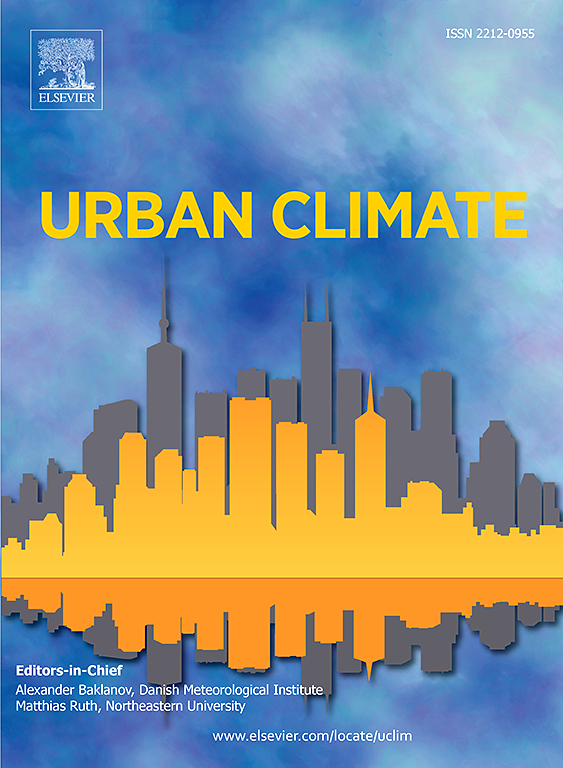Discovering directional relationships between urban morphology and thermal environment using an anisotropic 3D urban texture model
IF 6
2区 工程技术
Q1 ENVIRONMENTAL SCIENCES
引用次数: 0
Abstract
Urban morphology generally refers to the structure and layout of urban space and is often characterized by urban texture. Rapid urbanization has changed the shape of cities and created environmental challenges, especially in urban thermal environments. However, the directional relationship between urban morphology and the thermal environment has yet to be fully explored. Existing studies often rely on 2D models, which fail to capture the complexity of 3D urban morphology. Moreover, the influence of urban thermal anisotropy on this relationship is insufficiently quantified. To address these, this study proposes an anisotropic 3D urban texture model which divides surrounding space into directional sectors and generating distinct texture curves representing variations in 3D building density. The model was applied in Wuhan, China, to analyze the relationship between urban morphology and land surface temperature (LST) using random forest regression. The fitting accuracy (R2) of the proposed anisotropic model reached 0.725, which was 13.46 % higher than the original isotropic model. Furthermore, the study evaluated the contributions of 3D texture features from different orientations to LST. The proposed model provides a quantitative tool for understanding the directional influences of 3D urban morphology on environmental issues like temperature and air quality.
利用各向异性三维城市纹理模型发现城市形态与热环境之间的方向性关系
城市形态一般是指城市空间的结构和布局,往往以城市肌理为特征。快速的城市化改变了城市的形态,并带来了环境挑战,尤其是在城市热环境方面。然而,城市形态与热环境之间的方向性关系尚未得到充分的探讨。现有的研究往往依赖于二维模型,无法捕捉三维城市形态的复杂性。此外,城市热各向异性对这一关系的影响还没有得到充分的量化。为了解决这些问题,本研究提出了一个各向异性的三维城市纹理模型,该模型将周围空间划分为定向扇区,并生成不同的纹理曲线,代表三维建筑密度的变化。以武汉市为例,利用随机森林回归分析了城市形态与地表温度的关系。各向异性模型拟合精度(R2)达到0.725,比原各向同性模型提高13.46%。此外,研究还评估了不同方向的三维纹理特征对地表温度的贡献。该模型为理解三维城市形态对温度和空气质量等环境问题的定向影响提供了定量工具。
本文章由计算机程序翻译,如有差异,请以英文原文为准。
求助全文
约1分钟内获得全文
求助全文
来源期刊

Urban Climate
Social Sciences-Urban Studies
CiteScore
9.70
自引率
9.40%
发文量
286
期刊介绍:
Urban Climate serves the scientific and decision making communities with the publication of research on theory, science and applications relevant to understanding urban climatic conditions and change in relation to their geography and to demographic, socioeconomic, institutional, technological and environmental dynamics and global change. Targeted towards both disciplinary and interdisciplinary audiences, this journal publishes original research papers, comprehensive review articles, book reviews, and short communications on topics including, but not limited to, the following:
Urban meteorology and climate[...]
Urban environmental pollution[...]
Adaptation to global change[...]
Urban economic and social issues[...]
Research Approaches[...]
 求助内容:
求助内容: 应助结果提醒方式:
应助结果提醒方式:


